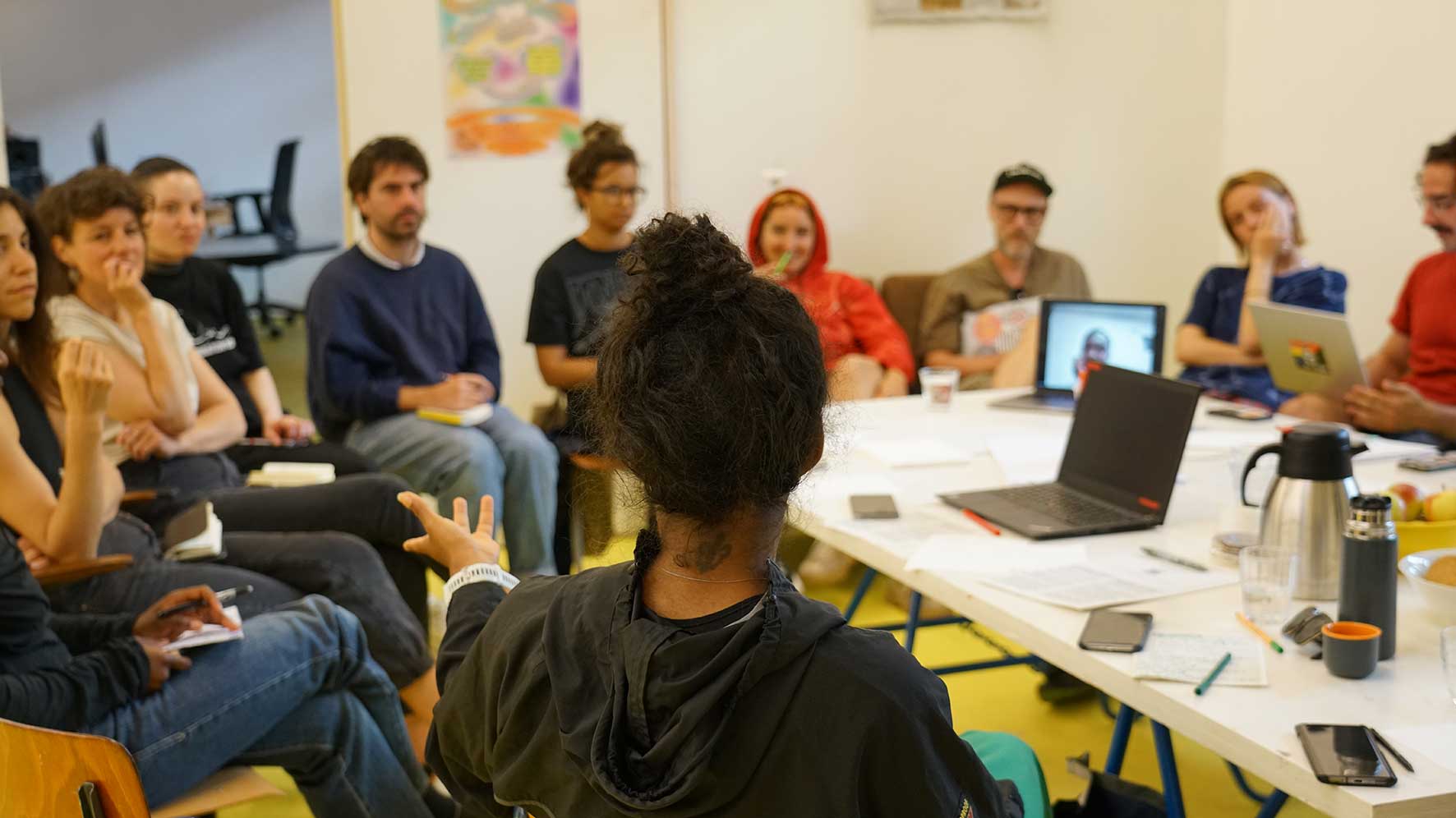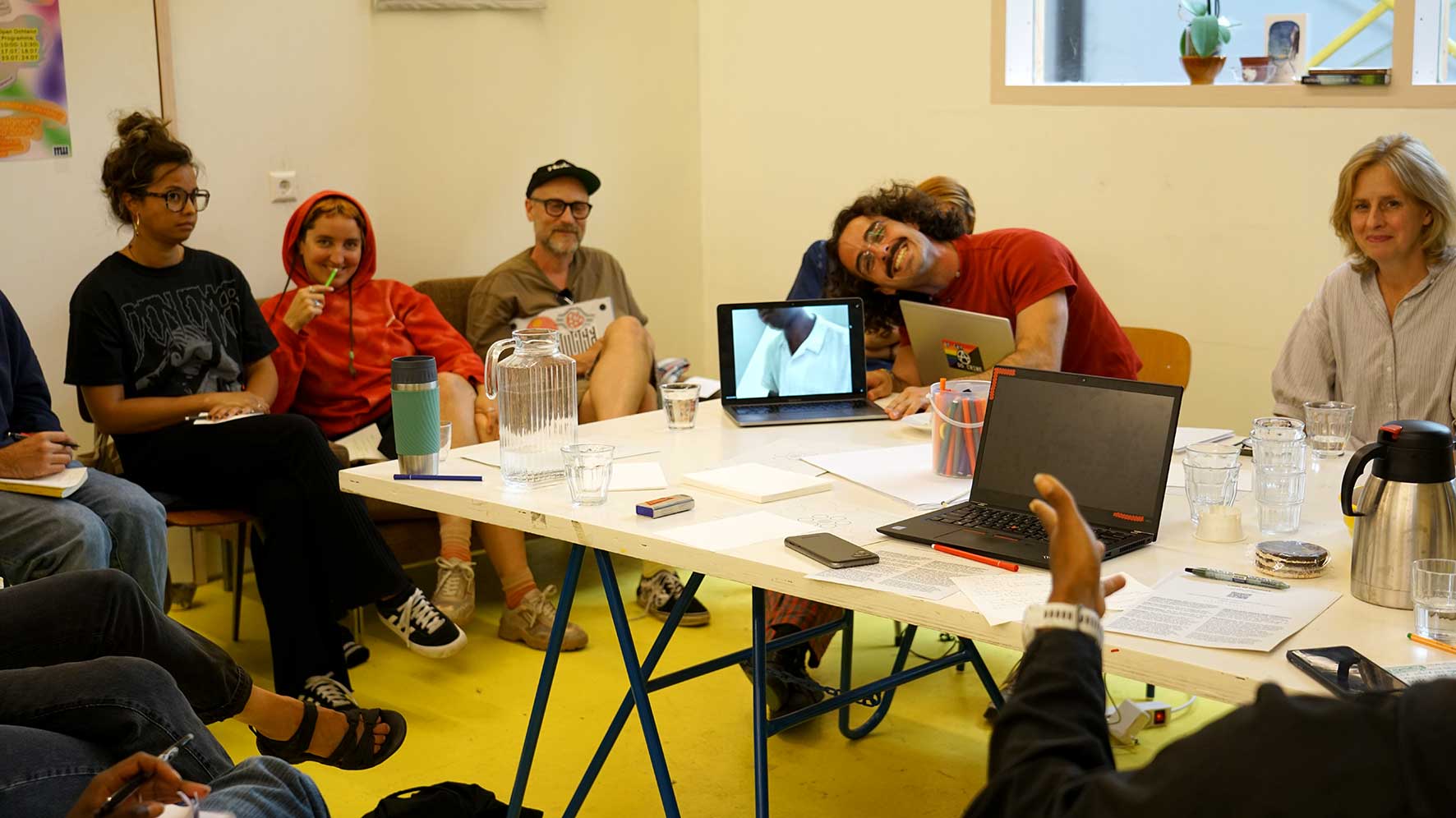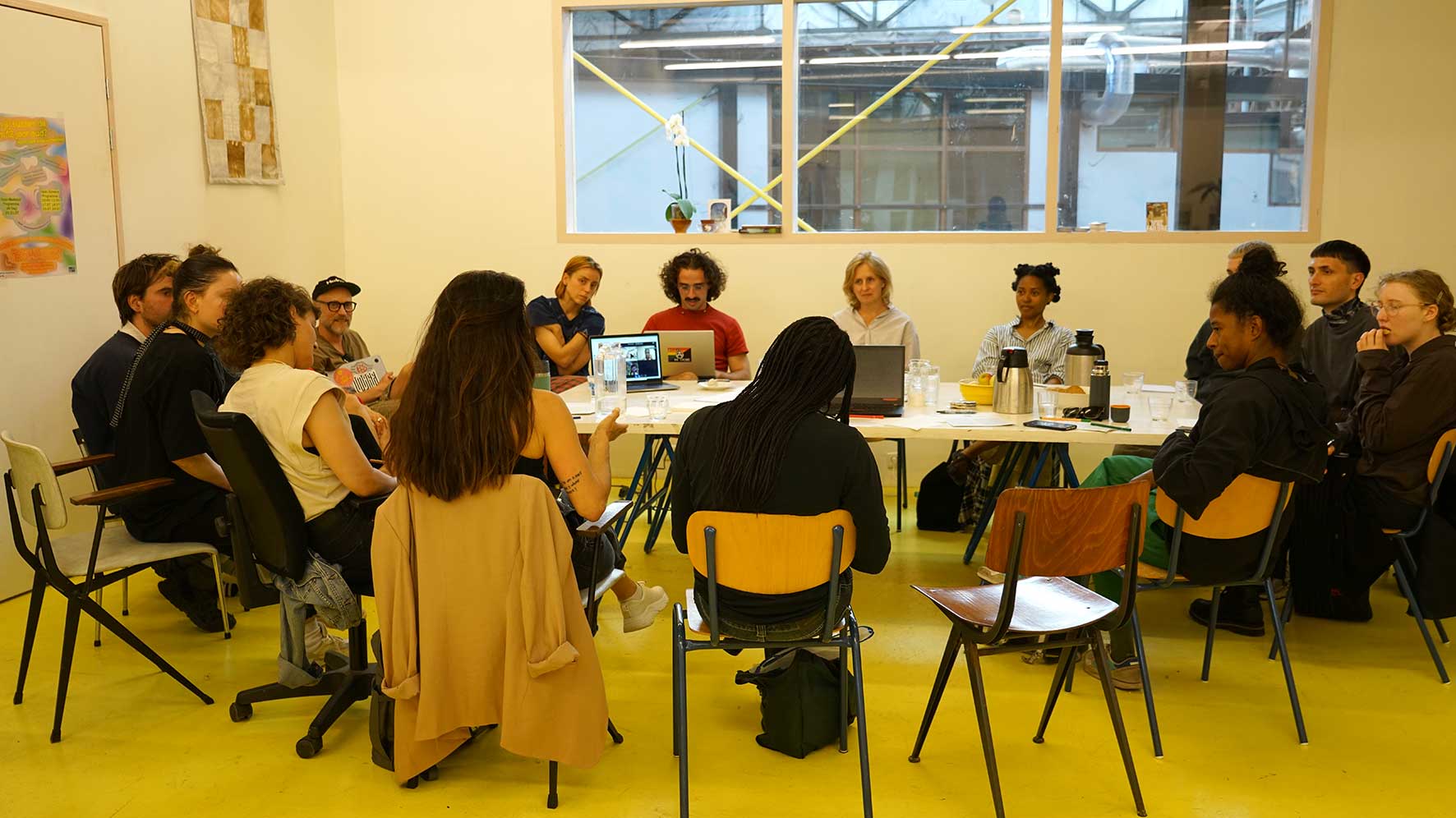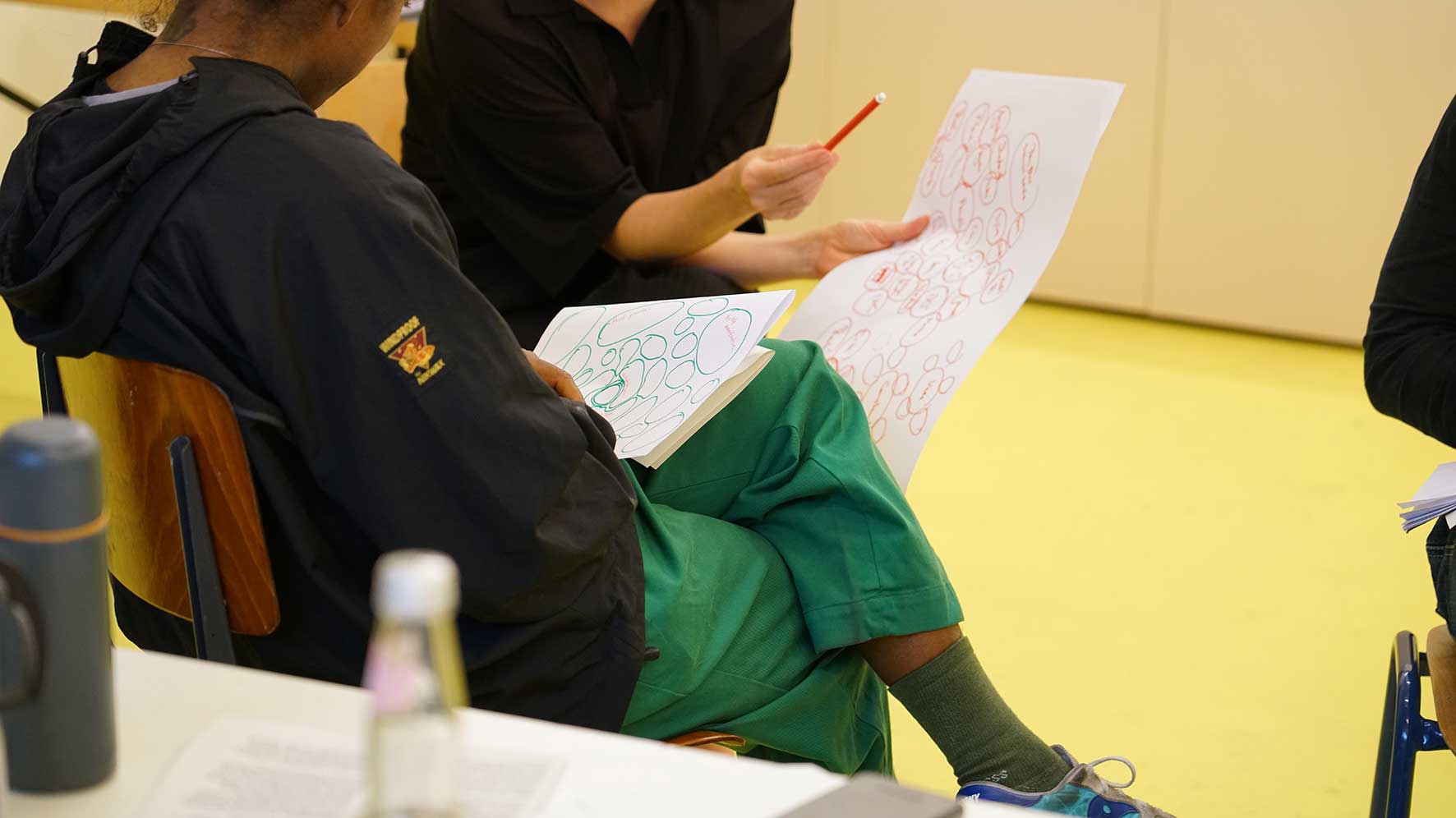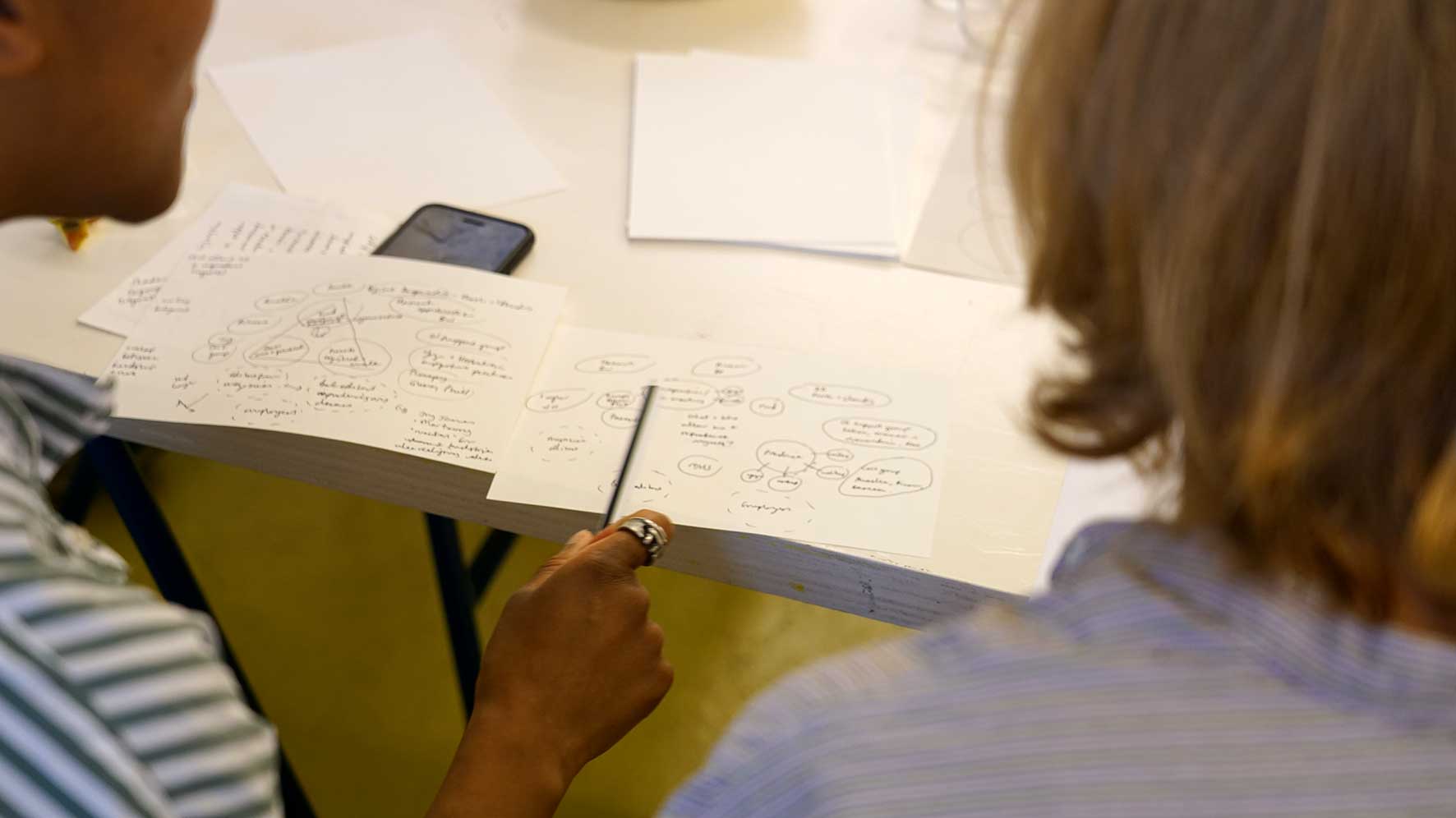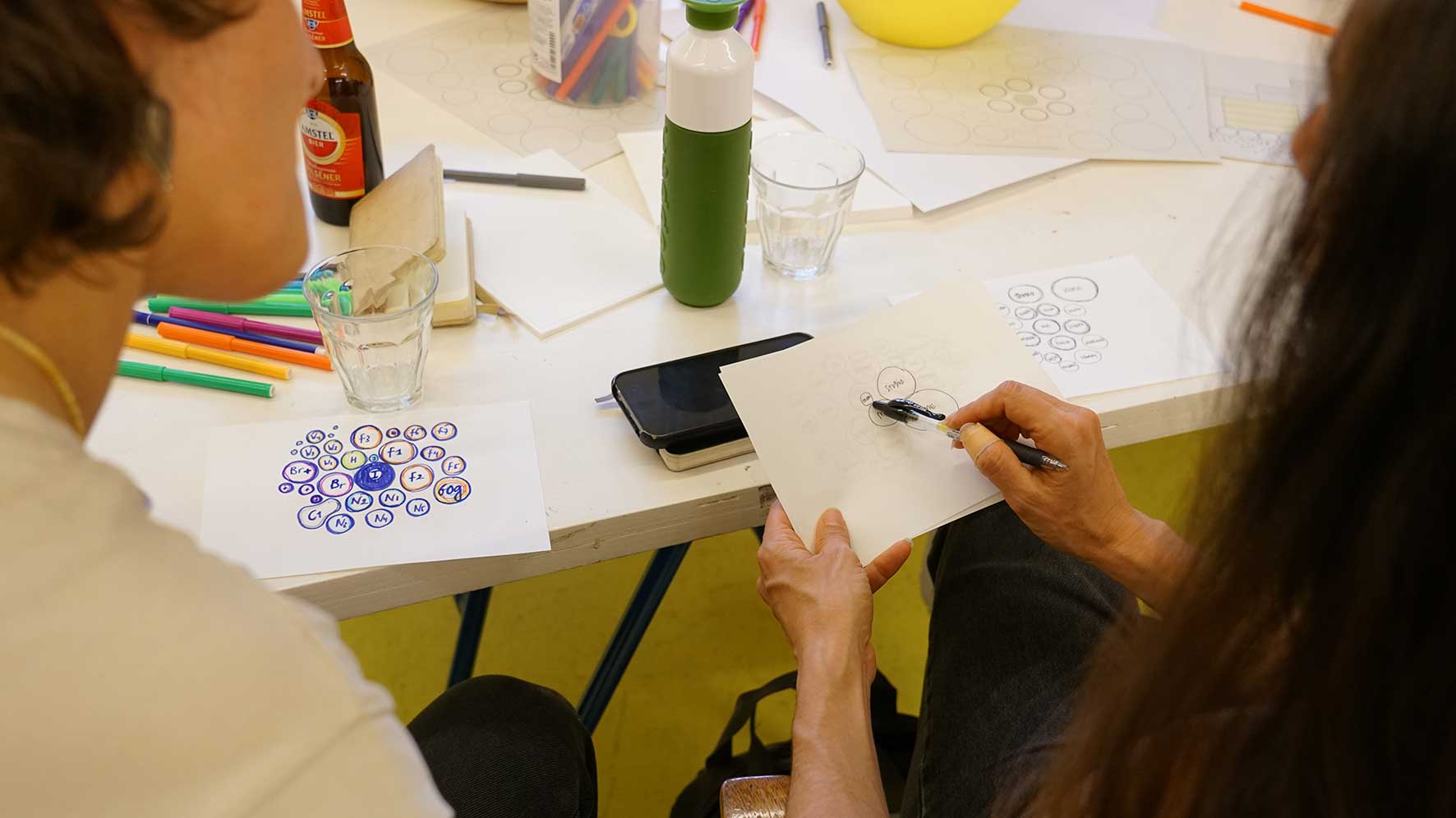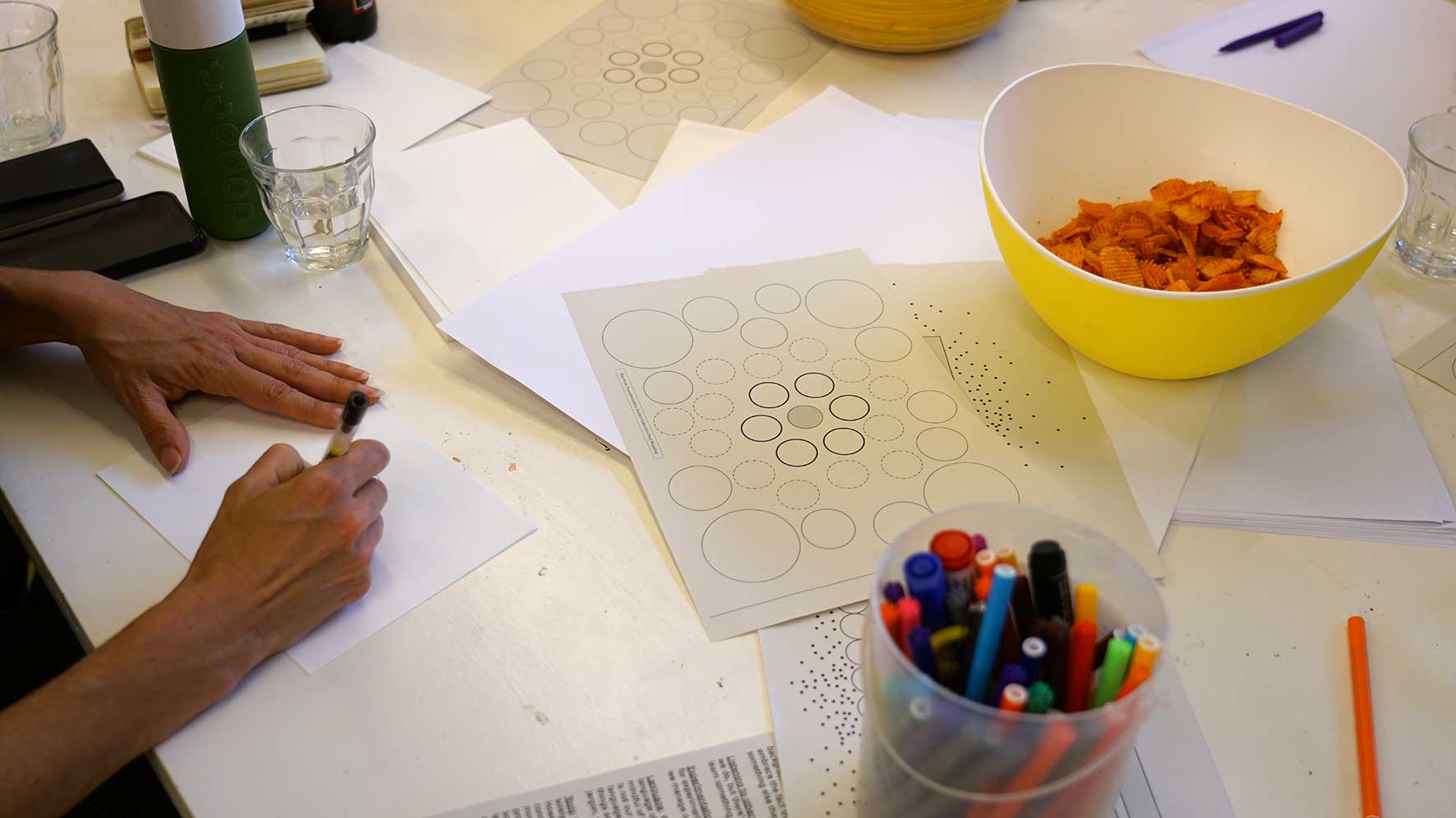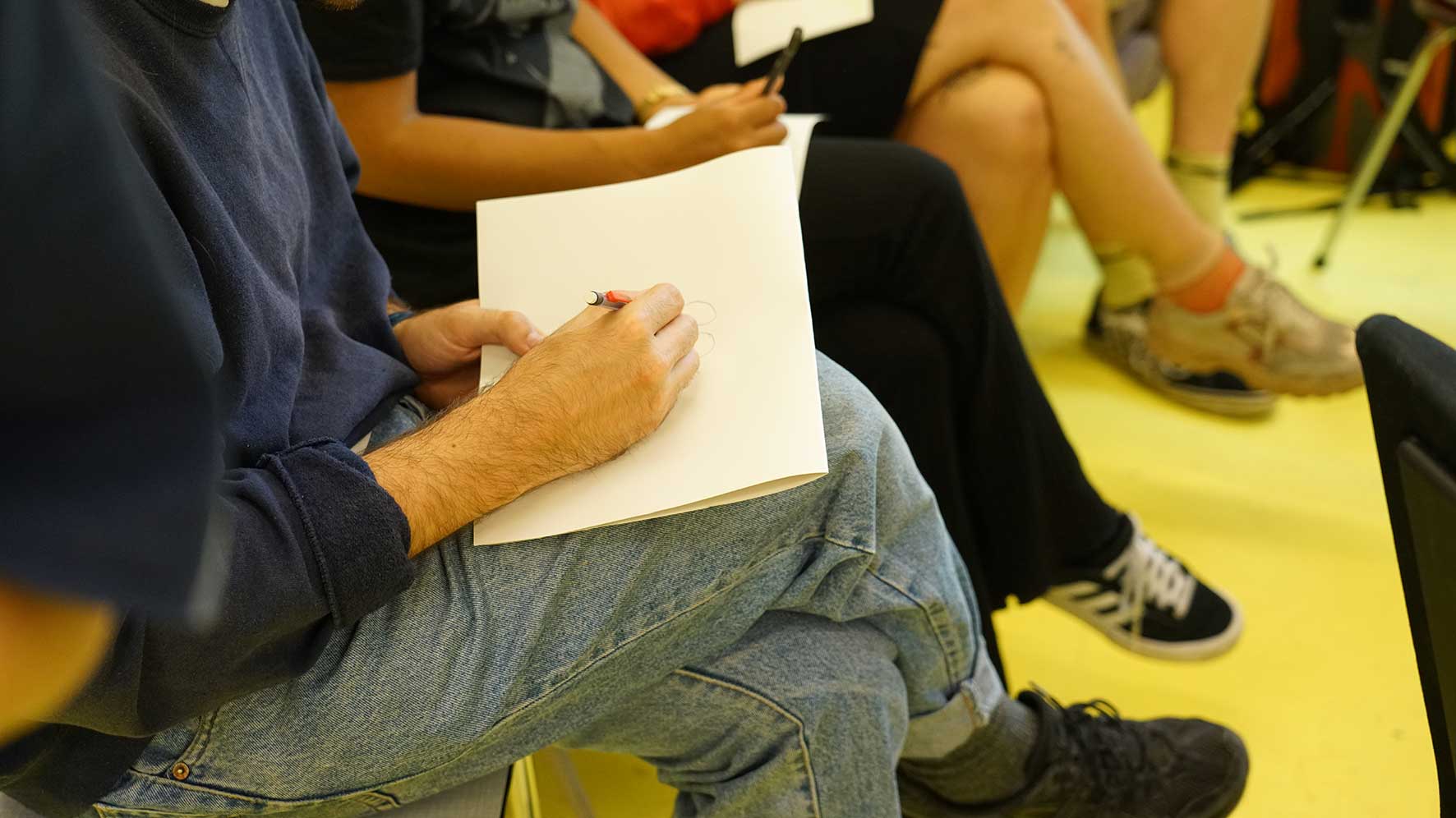Self-organized: Breaking the Organigram
| Self-organized: Breaking the Organigram | |
|---|---|
| Name | Self-organized: Breaking the Organigram |
| Location | H&D Studio |
| Date | 2024/06/28 |
| Time | 17:00-19:30 |
| PeopleOrganisations | not/nowhere, Taylor Le Melle, Art City NDSM, Sarah Payton |
| Type | Meetup |
| Web | Yes |
| No | |
A meet-up series about self-organization
We are inviting you to the first of a series of informal [re]work sessions that explore how self-organized communities involved with cultural work continue to develop and sustain themselves. We are particularly interested in exploring together with peers the tools and infrastructures that enable and/or hinder our collective work.
The three thematic [re]work sessions are roughly dedicated to {(1)} administration of care related to different cooperative models, {(2)} intersectional inspections of [digital] infrastructural labour organisation and {(3)} development of terms and conditions toward alternative economies.
 ID: A warped grid like structure within which an organigram is embedded. It contains white and black dots of different sizes, and light yellow boxes. The grid structure is white against a blue backdrop.
ID: A warped grid like structure within which an organigram is embedded. It contains white and black dots of different sizes, and light yellow boxes. The grid structure is white against a blue backdrop.
[Re]work session {(1)}: Breaking the Organigram
For the upcoming session we will be joined by Taylor Le Melle from not/nowhere, an artist workers’ cooperative that programmes workshops, screenings, exhibitions and other events and Sarah Payton who is an artist and community organizer at Art City NDSM in Amsterdam.
Together we will explore the situatedness of different decentralized organizational practices, their interdependencies and reflect through participants personal experiences, approaches and modalities within/as collectives and self-organizations. Through hands-on exercises we will imagine together different ways of configuring labor, care and infrastructure that nourish communities and strengthen allied networks.
Guests
Taylor Le Melle
…works as a curator (of sorts) and certainly as a writer of ante-modern and anti-modern criticism; off-kilter catalogue essays and fiction of the artistic sub-genre type; as an editor and publisher of several collections of science fantasy, theory and poetry; as a researcher into plants, property and physical experience — bodies, the social kind with reluctance and the flesh kind with enthusiasm — cultivating perception and proprioception through self-experimentation.
…is one of several co-directors of London-based workers cooperative not/nowhere, whose primary occupations is with building a just infrastructure for artistic practice via the circulation and distribution of 8mm and 16mm moving image formats.
Previous presentations include: Deviant Research, Van Abbe Museum (cur. Yolande van der Heide, N Aikens); Research Fellowship (org. F Dodzan/ A Groten), Sandberg Instituut; Amant Foundation Residency, Brooklyn (cur. J Berrios); Text Exercises, Felix Gaudlitz, Vienna (cur. Richard Birkett); Wysing Arts Centre, Cambridge (cur. A. Sandhu).
Recent Writing: Anthea Hamilton: Mash Up, Triangle Books; Otobong Nkanga: Unearthed, Kunsthaus Bregenz; Renee Green: Inevitable Distances, Hatje Cantz; DNA6: Carrier Bag Fiction, Spector.
Reviews for Tangents.art. Upcoming writing workshop at not-nowhere.org 5pm, 19 June, London
Sarah Payton
Sarah Payton (Detroit, 1967) is an artist, cultural producer and community organizer. She is (co)initiator of the annual manifestation NDSM OPEN, initiator and editor of the artists’ paper NDSM OPEN and co-founder of the initiative Art City NDSM. She is currently the chair of the board of the Tenants Association the Toekomst (the Future), and is a member of the elected Loodsraad (roughly: Shed Council) of the Kinetisch Noord Foundation which owns and manages the NDSM Loods. From 2020-2022 she held the temporary function of Community Organizer for the Tenants association.
Time table
17.00 Walk-in
17.15 Welcome by H&D
17.25 Introduction round
17.40 Introduction Taylor Le Melle (not/nowhere) and Sarah Payton (Art City NDSM)
18.00 Exercise Breaking the Organigram
18.30 Break
18:45 Exercise: Shadow organizing
19.15 Reintroduction
19.30 Drinks
Accessibility
This event will take place at the Hackers & Designers studio at NDSM-plein 127. The studio is located on the first floor of the NDSM Loods and is partially wheelchair-accessible. Please consult this page for information on the accessibility of the studio.
- The spoken language at the event will be English.
- Before joining make sure to carefully read the H&D Code of Conduct.
Documentation
Reflection on Self-Organized [re]worksession 1: "Breaking the Organigram"
In 2024, part of our activities are dedicated to reflecting on our collective infrastructures – their social, economic and technological implications – and explore alternative models for cooperative decentralized organization by organizing semi-public (re)working sessions with other collectives. In each session a different tool, method or infrastructural area takes center stage.
How do self-organized communities involved with cultural work continue to sustain themselves?
On October 18, we gathered for the first self-organized [re]worksession titled “Breaking the Organigram,” which brought together artists, cultural practitioners, and activists to engage in a critical dialogue about decentralized organizational practices, and their interdependencies. Participants were invited to reflect through personal experiences, approaches and modalities within/as collectives and self-organizations. Additionally we invited Taylor le Melle from the not.nowhere,[1] a poc owned workers cooperative based in London, and Sarah Payton[2] from NDSM Art City Amsterdam to share about their experiences and practice in different groups. Taylor was accompanied by Daniel and Jennifer who joined us online from London.
Sarah Payton has decades of experience in feminist collectives and has worked as a community organizer at NDSM Art City in Amsterdam. She spoke about her involvement in developing the prior shipbuilding warehouse into the conglomerate of artist studio’s that is now known as the Art City / Kunstad and situated within the NDSM Loods.
In Sarah's account, the original dream was to start a community of artists and craftspeople in the north of Amsterdam, far away from the city center. To do this, funding and an organizational structure were necessary. The association was pressured to bring in more responsible and important people to supervise. The building, also housing the H&D studio, is a 100-year-old shipbuilding warehouse, and the idea to make studios here began 16 years ago. “Back then,” she continues, “there was this idea that we were building something utopian through self-organization.”
Sara reflected on the transition from idealism to a complex reality where financial pressures and institutional entanglements often challenged the core values of collectives. The maintenance, responsibility, and burden of things that don’t work have become a huge project, and the financial implications are enormous. “Today, there’s a community of 200 people. Half of them have built their own studios; 1/4 are long-term residents, and 1/4 are new. For the past 20 years, different parts of the community have come together in various ways to take control of this space, but we were never fully in control and had very little say as renters. We pay rent to a foundation that runs the building, and they are the owners. There’s a tenants' association, but it has very little formal control.” Things seem to be changing now that a policy document in being writing with the tenants.
Referencing political philosopher Wendy Brown, Sarah pointed out that the relationship between democracy and community is crucial. “You need community for democracy to work,” she explained, “not the other way around,” stressing the importance of sustaining spaces where alternatives can still be realized, even if their potential is not immediately clear. For Sarah, the ongoing maintenance of these spaces—both physical and ideological—is vital, though increasingly difficult. She touched on the fatigue of repeated funding conversations, noting that “people get tired of having the same discussions about money and resources, but we keep going because it’s so valuable.”
Taylor le Melle, co-founder of the UK-based cooperative not.nowhere, shared a story that exemplifies the complex dynamics of inheriting tools and legacies. The equipment—16mm and Super 8 cameras, Steinbeck editing tables, and film archives—was passed down from nowhere, a now-closed non-profit funded by the British Arts Council. After the organization had to shut down, they offered not.nowhere their equipment. This moment of inheritance became a turning point for the group, forcing them to confront the dilemma of whether to professionalize in order to manage resources and sustain their work, or to preserve the informal, self-organized nature of their collective. Those interested in becoming an organization started a legal process against the British Arts Council to let nowhere give them their physical assets (including the funding which they argued activated the physical assets). That’s when the name not.nowhere comes from. The equipment itself has along history. “There's a lot we got from what was passed on but we are also trying to add onto or build on top of. The acts of repair is sometimes quite difficult. Some parts are no longer manufactured and its better to replace them altogether than to repair them.”
To the question whether the equipment is entraps the collective, Taylor answered, “It’s a gift and a burden.” “We’ve inherited all this analog equipment, but repairing it requires negotiating with people who live in an entirely different world—some of them don’t even have mobile phones. These people talk about camera's if they are real people and that is very beautiful. It’s a beautiful place to be in the ven diagram.”
For Taylor, this equipment, while very valuable, symbolizes the tension between progress and failure within post-industrial art practices. “It’s impossible for us to ‘succeed’ in a traditional sense,” she explained. “I had this idea to start making our own film stock, but it’s just not feasible—it would take days to make 30 seconds of footage. So, in a way, it feels like we’re constantly failing, but that’s part of the process.” The burden of the equipment becomes a metaphor for the broader challenges collectives face when trying to balance inherited practices with new modes of working.
Daniel, another member of not.nowhere, extended this metaphor, describing how working with this old equipment feels like interacting with sentient beings. “These machines require time, patience, and a relationship. It’s a slow process, and there’s something beautiful but opaque about it,” he explained, suggesting that the opacity of these tools mirrors the opacity of collective infrastructures.
Precarity and Collective Sustainability
While concepts of collective work and ‘self-organization’ can be empowering, self-organization often emerges out of necessity rather than autonomy and can perpetuate precarity. Both Sarah and Taylor stressed the precarious nature of collective work. Sarah was vocal about the dangers of funding dependency, particularly when collectives start to compromise their values in pursuit of financial stability. “When we chase grants, we’re often trading our values for a seat at the table,” she remarked. This echoed Taylor’s frustration with the legal and bureaucratic hurdles not.nowhere has been facing in their efforts to secure funding and recognition from institutions like the British Arts Council so as to create “jobs that do not suck.” Sara’s reflection on the dynamics at NDSM further highlighted this tension. As the project expanded, so did the financial responsibilities. “We weren’t in control and had very little say as renters,” she recalled, describing the enormous costs of maintaining the space. Even with a tenants’ association and some level of control, much of the community’s energy is still spent negotiating with institutional frameworks, trying to hold on to spaces where alternatives can be imagined. The dialogue revealed the intricate relationships between collective practices and external pressures, particularly the role of funding in shaping artistic endeavors. Sarah's historical lens and Taylor's practical insights prompted participants to consider how these dynamics have evolved and what they mean for the future of self-organized communities.
Organiwhat? Podmapping exercise
The session concluded with the “Breaking the Organigram” exercise, where participants were encouraged to rethink traditional organizational structures. In an application for a multi-year grant we were asked to share an organization diagram (organigram) of Hackers & Designers. This type of diagram is typically defined by hierarchical relationships and strictly defined borders between different tasks and responsibilities. In other words, it imposes as a rigid framework. How do we confront the need for institutional and economic renumeration while remaining true to the fluid, often chaotic nature of self-organization, and making that more messy reality of collective work legible?
Following up on this tension, the exercise proposed Mia Mingus’ pod mapping technique[3] as an alternative to the rigid organigram. This map comes from the disability justice movement.
We proposed to participants to put themselves or their collective or organization in the middle of the map. While reflecting on the question: "Who and what do you need in order to function as a collective as well as an individual within the collective?" participants started mapping their personal support networks. What defines a collective oftentimes expands those who are immediately involved. Collectives are porous structures that are interdependent and respond to changing conditions and relations. Many of us are enmeshed in various environments that support and/or hinder what it is we do as collectives.
The maps were mostly meant for participants to obtain new insights about their own intricate collective involvements. Participants discussed their experiences of making the maps in duos, after which we regrouped and shared with the whole group what the discussion brought about.
Several questions arose from the exercise:
When do you switch off when you do self-organized work?
How open or closed is a self-organized collective?
How do collectives operate within institutions?
Where does the collective start and where does it end?
How do we stay disorganized and develop without surrendering the curve of progress?
How can a group grow while resisting professionalization or institutionalization?
How do you distribute responsibility / workload in a way that everyone feels equally involved?
What hierarchies come naturally?
How do we avoid replicating the ways of the capitalist world?
[1] https://www.not-nowhere.org/
[2] http://www.sarah-payton.com
[3] https://batjc.wordpress.com/resources/pods-and-pod-mapping-worksheet/
